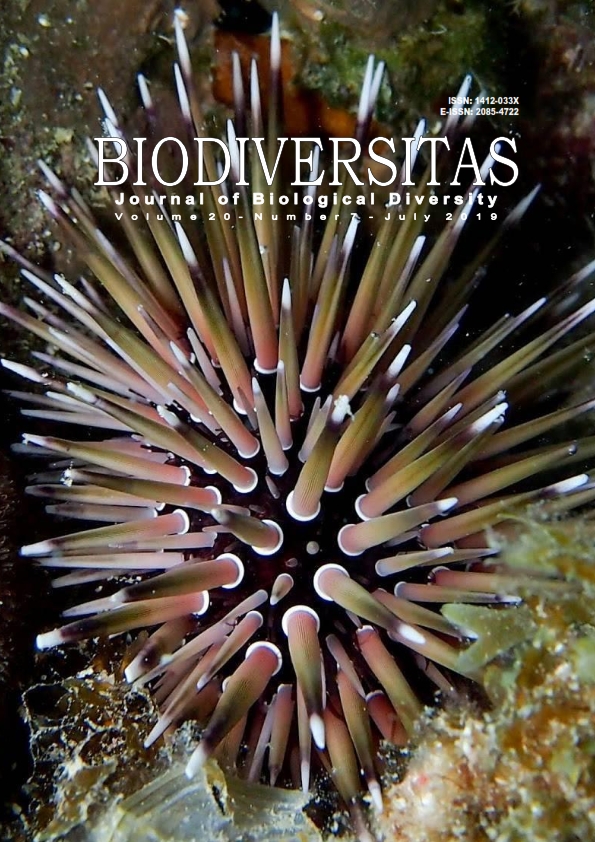Short Communication: Diversity and community structure of trees in two forest types in Mt. Apo Natural Park (MANP), Philippines
##plugins.themes.bootstrap3.article.main##
Abstract
Abstract. Salvaña FRP, Lopez CKC, Mangaoang CC, Bretaña BLP. 2019. Short Communication: Diversity and community structure of trees in two forest types in Mt. Apo Natural Park (MANP), Philippines. Biodiversitas 20: 1794-1801. A forest ecosystem is the basic ecological unit that exists as a habitat for a community of both native and introduced organisms. It is the limited number of reliable information on the diversity and community structure of tree species in one of the Philippines’ protected landscape, Mt. Apo Natural Park (MANP), that initiates this study. The present study was carried out to determine species diversity and community structure including seedlings, saplings and large trees of two forest types, namely tropical lowland evergreen rainforest and tropical lower montane rainforest. Two one-kilometer transects were established in each forest types. Each transect was divided into five sampling points. A total of 67 tree species belonging to 29 families were identified from both forest types. Species richness was higher in tropical lowland evergreen rainforest compared to tropical lower montane rainforest. Relative abundance showed that among the identified families, Dipterocarpaceae and Moraceae have the highest abundance which is mostly present in the two forest types. This was followed by Meliaceae and Myrtaceae. The two forest types were satisfactory at community level having large number of seedlings compared to saplings and trees. Based on this, the two forest types, dominated by seedlings, are actively regenerating.
